Incorporating Memes, Emojis, And Gifs Into Your Social Strategy For Higher Engagement
Memes are the best gift to mankind from the social media world.
Everyone loves them, but not everyone knows how to use them.
Memes are everywhere. They’re fun, catchy, relatable, and easy to consume.
That’s why, over the past couple of years, memes have become a communication tool used by the entire internet collective.
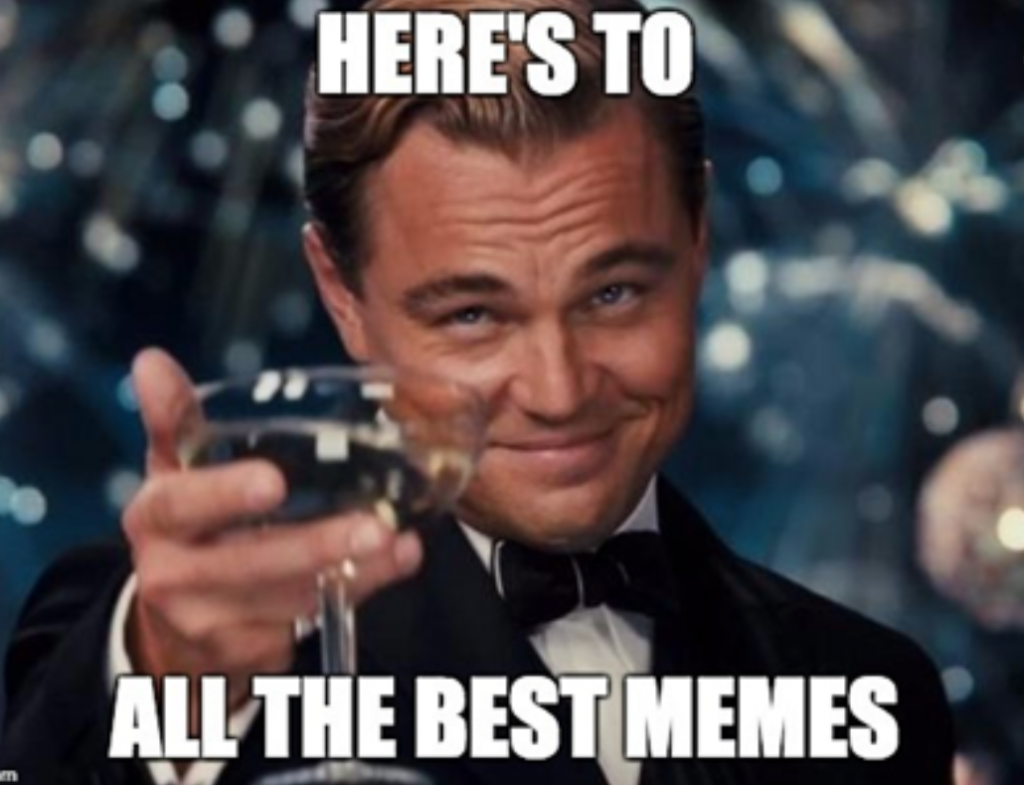
What we’ll talk about in this blog post is how you can use this ongoing trend to get people talking about your brand and ramp up your engagement rates.
Without much ado, let’s dive right in.
Digging into definitionsYou know the drill.
Before we get down to the specifics and show you how you can use memes and emojis the right way in your marketing, we need to make sure you understand what each of these terms mean.
According to Wikipedia: “An Internet meme, commonly known as simply a meme, is an activity, concept, catchphrase, or piece of media that spreads, often as mimicry or for humorous purposes, from person to person via the Internet. An Internet meme usually takes the form of an image, GIF or video.”
Memes are a piece of media, and a GIF is a type of media that a meme can be presented as.
GIFs are graphics that supports both animated and still images.
And how about emojis?
The Myriam Webster Dictionary defines emoji as “any of various small images, symbols, or icons used in text fields in electronic communication (as in text messages, e-mail, and social media) to express the emotional attitude of the writer, convey information succinctly, communicate a message playfully without using words, etc.”
What you might be surprised to hear is that memes are not a new phenomenon.
The word “meme” was coined by Richard Dawkins in 1976, in his book The Selfish Gene.
Dawkins was a biologist who came up with this concept to express the way ideas were spreading from person to person.
And all this happened way before the Internet appeared.
So, memes are not a new thing – they’ve just taken another form with the rise of the Internet.
But, one question remains, why are memes so popular in the internet age?
Why are memes so popular?The first thing you might think is: well, they’re visual, and social media is all about visuals!
Although the visual element is important, memes are much more than just an image – they represent an inside joke.
In other words, to understand the meaning behind a meme, you need to have some sort of insider knowledge. Otherwise, you’ll just see an image with some text on it, and won’t truly comprehend the meaning of the message.
As a result, memes make people feel like they’re part of a community and the associated sense of belonging that makes them so widely used and appreciated.
Plus, memes are created by the general public. Anyone with an idea can create a meme. Whether the meme will go viral is uncertain.
However, people love creating memes and love giving their two cents.
Now, you might wonder, what do “inside jokes” have to do with you as a marketer, and exactly how can you use memes to boost your brand?
Why marketers should take advantage of memes, emojis, and gifsPeople avoid ads. Period.
There are so many ads in the online space that most internet users feel overwhelmed and annoyed, and have either…
- Gotten used to seeing ads so frequently that their brains are automatically filtering them out or…
- Users use ad blockers to get rid of advertisements.
With odds stacked up against traditional advertising, brands need to come up with new and innovative ways of raising awareness and getting on the radar of their potential audience.
That’s why native content, product placement, influencer marketing, affiliate marketing and other forms of modern advertising methods have been gaining so much popularity.
Memes are the same – they’ve become a universal language shared among the internet collective. They offer a nonintrusive and fun way to spread your message and get your brand seen by otherwise hard-to-reach customers.
People in the smartphone era are used to sharing memes and using emojis to communicate on social media.
So, including memes and emojis in your online marketing strategy will help you entertain your followers, bolster engagement and shares, as well as show your audience the human side of your brand.
Plus, most of the time, memes won’t cost you anything.
You don’t need to spend any money on producing images or video; the graphics are already there, and all you have to do is to come up with a great idea on how you can use these images as part of your campaign. And now with the emergence of free text to image AI tools, it’s even easier to craft graphics that are tailored precisely to meet your needs.
This takes us to the most important part of this article:
How to use memes and emoji the right wayIncluding memes and emojis in your marketing is anything but easy – and should be approached with care.
Memes often include humour and satire and are widely used as a form of social commentary. A lot of times, they ridicule current events and mock human behaviour.
The result?
With memes, there’s a fine line between being funny and insulting, and it’s easy to fall in the wrong category.
And when it comes to emojis…
When used the right way, they can greatly enhance your ads and posts… but use them wrongly and you can easily distract and confuse your audience.
Below, we’ll list a couple of ways you can use memes as part of your social media strategy and show you some examples that will illustrate what you need to watch out for when developing your own content.
1. Promote your productsOne of the top reasons brands decide to use memes in their marketing is to promote their products.
Different brands do it differently, and some are better than others.
Netflix, for example, has created a separate Instagram account named @netflixisajoke – this account only publishes memes!
View this post on InstagramA post shared by Netflix Comedy (@netflixisajoke) on Nov 15, 2017 at 5:01am PST
Unlike a lot of other brands, Netflix uses their own content to create memes.
Other companies, like Gucci, have also jumped on the meme bandwagon.
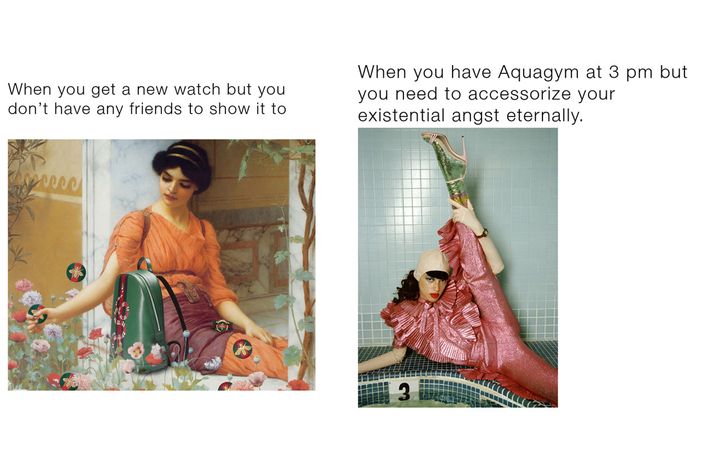
Gucci posted different memes featuring their products, and then explained each meme in their caption, similarly to how a curator would explain a painting.
For this campaign, the reactions were mixed.
Some loved their idea and how Gucci’s feed mimicked an online gallery, but many people didn’t quite understand what the brand was doing.
You can use social listening with a tool like Keyhole to gauge reactions to your meme campaigns or conduct sentiment analysis.
Here are some of the reactions:
The good news is, the people who didn’t like the campaign are not Gucci’s target audience.
Gucci sells high end luxury products and target adults with high income who can afford to spend hundreds or thousands of dollars on a single product.
Generally speaking, this target audience may not be as fluent in memes their younger counterparts.
Adding a caption that explained the meaning behind the meme in an innovative way was a strategic move given their campaign goals and audience.
2. Entertain your target audienceNot everything about your content needs to be or should be about promoting your products.
BarkBox is a monthly subscription service that provides a monthly box of dog products to dog owners.
If you check BarkBox’s Instagram profile, you’ll notice one interesting thing…
Not many of the posts on their feed are about their products.
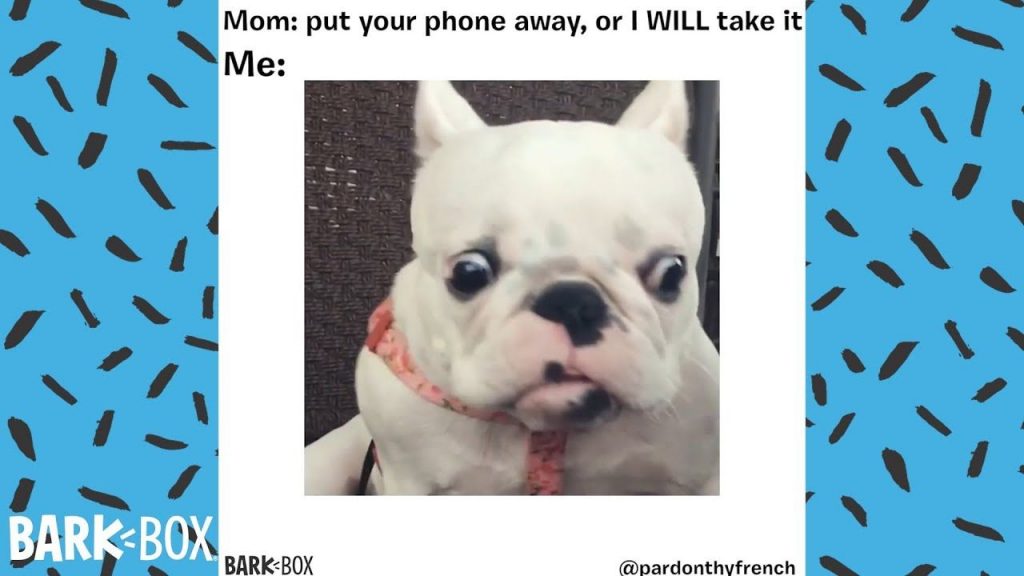
In fact, they like sharing entertaining quotes about dogs or memes featuring dogs.
The brand’s strategy is all about entertaining their target audience: dog owners and dog lovers.
With 1.5 million followers on Instagram only, it’s safe to say: BarkBox knows how to play the meme game!
They’ve garnered brand awareness by sharing entertaining, easy to understand memes on their Instagram.
3. Play on trending topicsMore often than not, the difference between a good joke and a bad joke is timing.
The same is true for marketing: the difference between a good campaign and a bad campaign is often timing.
Brands that understand timing can create powerful campaigns that go viral and reach hundreds of thousands of people.
For example: take Seamless.
Seamless is a food delivery service that got the attention of internet users all around the world for their 2014 #OscarNomNoms campaign.
Just after the 2014 Oscar nominations were announced, Seamless went viral with their series of Oscar film spoof posters featuring food and beverage.
People raved about the campaign – almost immediately users started creating their own parody movie titles and puns using the OscarNomNoms hashtag.
The company took advantage of the 2014 Oscars to create memes and trending content.
4. Raise awareness about an issueAnother way to use memes or emojis is to raise awareness about a cause.
The World Wildlife Fund’s emoji campaign aimed at raising awareness about endangered animals is a great example.
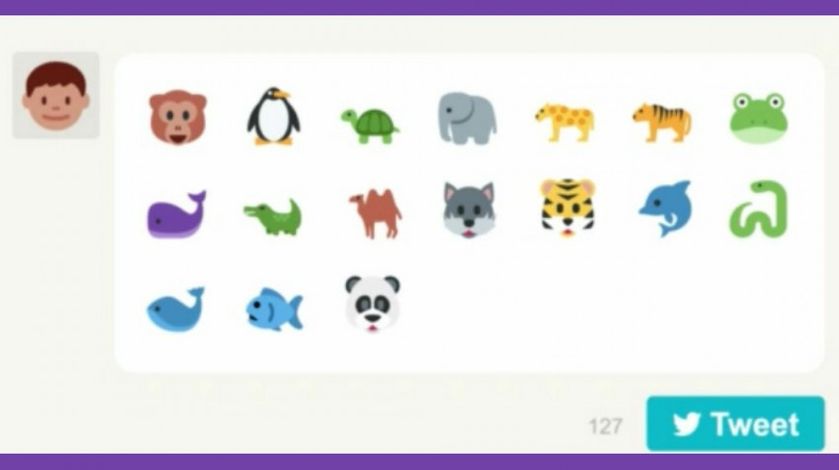
In 2015, the WWF partnered with Twitter to create a set of 17 emojis that represent 17 endangered animals, and urged Twitter users to make a symbolic donation by tweeting one of these emojis.
Now that you’ve seen a few strategies you can use memes and emojis to boost your brand and get on your audience’s radar, let’s go over a couple of the things you need to remember before using memes as part of your marketing.
Key takeaways 1. Know the meaning of your memesIf you’re using viral images as memes, you need to understand their meaning before you can create something your audience relates to.
If you miss the mark, things can get weird pretty quickly – and your memes can be shared for all the wrong reasons.
Some may argue that there’s no such thing as bad publicity, but just to be safe, do your research before you create and publish your content.
2. Don’t try to be overly cleverOne of the most popular use of emojis apart from adding an emoji to a message, are the “decode this emoji” type of messages.
These messages are great as they urge people to guess the right answer and engage.
Deadpool took a huge risk with their emoji billboards when announcing the movie’s premiere:
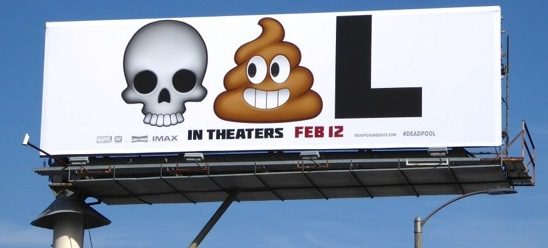
However, the message was simple and easy to decode so people found it refreshing, funny and entertaining.
Unlike Deadpool, Chevrolet completely missed the point of using emojis with they wrote an entire press release in emojis.
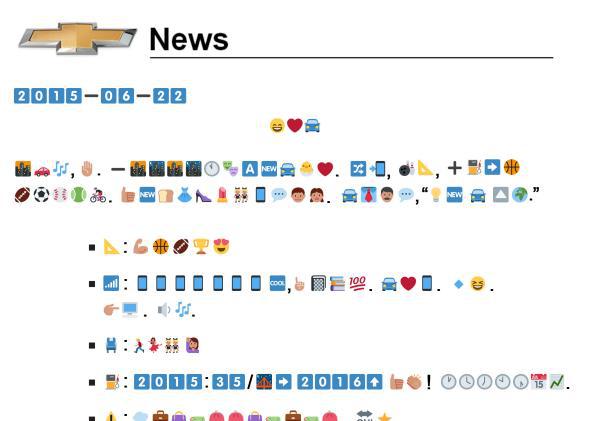
However, the campaign received backlash as Chevrolet ignored the fact that people online have short attention spans…
3. Stay currentKeep up to date with recent news and the topics that are discussed widely on social media.
This will help you choose relevant memes and join conversations that are trending.
4. Stay on brandEmojis and memes can be great for creating a buzz and boosting your engagement rates.
You need to make sure that the memes you use are in alignment with your brand voice. This is one of the hardest tasks for many brands and marketers.
To pick the right memes for your business, you need to study your audience:
Who are they? What do they like? What kind of content do they consume? What are some of the challenges they face? What topics are they interested in?
Answering these questions will help you create a persona and ensure that each piece of content you create enhances your brand image and interests and entertains your audience.
5. Measure twice, cut onceWith memes, there’s a fine line between being funny and being offensive.
In March 2015, Starbucks launched the #RaceTogether campaign which encouraged Starbucks staff to write RaceTogether on Starbucks cups, and start conversations about race with their customers.
Although it might have started as a noble initiative, the campaign resulted in a public backlash.
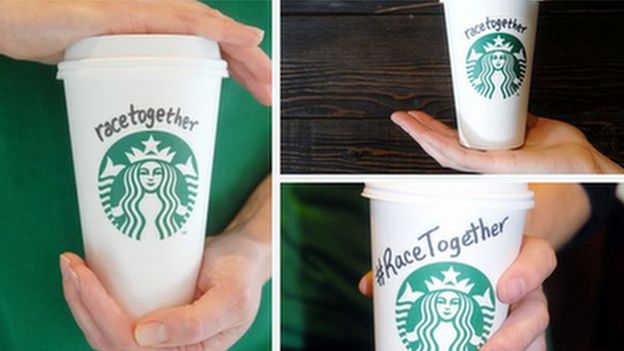
The lesson is clear: when talking about sensitive topics, think twice before launching a campaign.
6. ApologizeSometimes, regardless of your intentions, your campaigns will not land and will not be well received.
This can happen to anyone – not all campaigns go viral.
However, if your campaign gains publicity for all the wrong reasons, and some part of what you created has offended a group of people, own up to your mistake and apologize.
Your audience will understand. It is people who are running your brand, after all, and all people make mistakes from time to time.
And that’s about it…
Now keep calm and meme on!
Keyhole is a real-time conversation tracker that provides keyword and hashtag analytics for Twitter and Instagram. Get started for free.
Related Articles:
Twitter Engagement Rate Calculator + 6 Tips To Increase It
10 Proven Strategies To Increase Engagement On Facebook
According to Wikipedia: “An Internet meme, commonly known as simply a meme, is an activity, concept, catchphrase, or piece of media that spreads, often as mimicry or for humorous purposes, from person to person via the Internet. An Internet meme usually takes the form of an image, GIF or video.”
Here's how to use emojis and memes the right way:
1. Promote your products
2. Entertain your target audience
3. Play on trending topics
4. Raise awareness about an issue
Memes have become a universal language shared among the internet collective. They offer a nonintrusive and fun way to spread your message and get your brand seen by otherwise hard-to-reach customers. People in the smartphone era are used to sharing memes and using emojis to communicate on social media.
So, including memes and emojis in your online marketing strategy will help you entertain your followers, bolster engagement and shares, as well as show your audience the human side of your brand.
The post Incorporating Memes, Emojis, And Gifs Into Your Social Strategy For Higher Engagement appeared first on Keyhole.
* This article was originally published here

Comments
Post a Comment